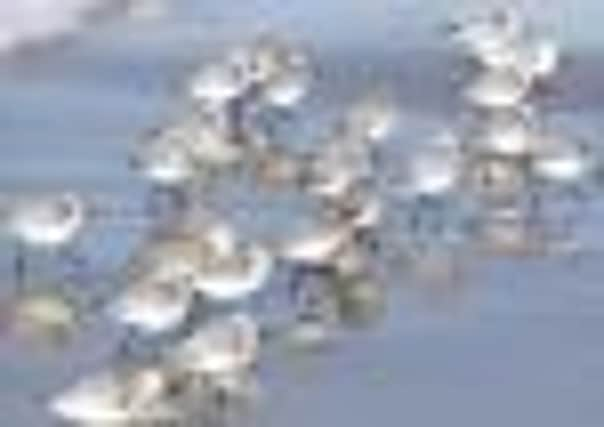Outdoors: Keep an eye out for sanderlings


As I scan the water’s edge with my binoculars I pick out small groups of bar-tailed godwits, dunlins, ringed plovers and curlews. By the far side of a loose cluster of barnacle-encrusted rocks, a flock of energetic sanderlings dart across the sand on twinkling toes, taking to the air occasionally on quivering wings as they scour the seaweed-flecked beach for its rich bounty of invertebrates.
For these little sanderlings, this beach in the Western Isles is a vital refuelling stop after a long migration from their breeding grounds in the Arctic tundra of Greenland and Siberia. They will hang around for several days before heading on to longer term wintering grounds in other parts of Scotland and Europe. Some may even travel on as far as Africa.
Advertisement
Hide AdScotland’s strategic position on the north-western edge of Europe and our relatively benign winter climate, combined with sheltered estuaries and firths, provides the perfect migratory stop-over point and wintering location for many wading birds. Indeed, Scotland’s wintering waders hold incredible international conservation importance, with more than half a million birds arriving here each year. Whilst many will have come from north of the Arctic Circle, others will have made the relatively short journey from nesting sites in upland and marshy areas of inland Scotland, or the even shorter hop from breeding areas near the coast.
Although there are exceptions to the rule, waders are generally characterised by their relatively long legs and bills that enable them to forage for marine invertebrates, probing the sand and mud to winkle out worms and molluscs. It’s hardly surprising, therefore, that our estuaries are particularly favoured because of the rich pickings provided by the vast populations of invertebrates found in such areas. The main wader hotspots in Scotland are the Solway Firth, inner Firth of Clyde, Moray Firth, Montrose Basin and the Firth of Forth.
However, almost every part of Scotland’s 11,800km long coastline will hold at least a handful of waders, making the shore in autumn and winter an incredibly exciting place to be. The number of wader species found here is pretty impressive too, ranging in size from the curlew, Europe’s largest wader, to the diminutive little stint, which is no bigger than a house sparrow. The most common are dunlins, knots, redshanks, bar-tailed godwits, curlews, golden plovers and oystercatchers. One of our most fascinating species is the turnstone, which uses its short pick-axe bill to lever up small stones so as to feed upon sand-hoppers, small crabs and molluscs that lie beneath. Another specialist of the rocky shore is the purple sandpiper that hangs around in small flocks right at the water’s edge and is sometimes forced into a brief hovering flight by the crashing waves.
Sadly, all is not well with our wader populations, with most of our coastal wintering species having declined in recent decades. For some species, such as the knot, it is thought that climate change may be impacting upon breeding success on their breeding grounds on the tundra, given that temperature shifts threaten the very specific ecological niche they occupy. For other species that breed closer to home in Scotland and adjacent parts of northern Europe, the drainage of wetland areas is having a serious effect. Waders are also vulnerable to land reclamation and disturbance on their key winter coastal sites.
Waders represent the very embodiment of our coasts during autumn and winter, and when watching a large flock wheeling over the sand against the backdrop of the rolling surf, it is hard to imagine that they face threats on so many different fronts.